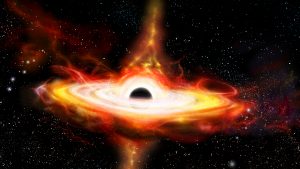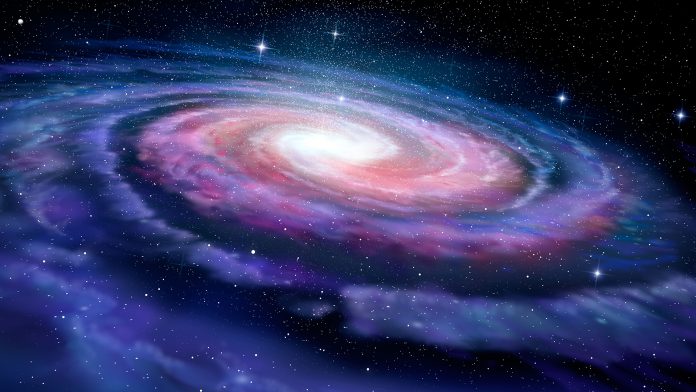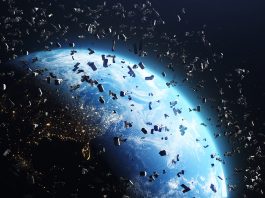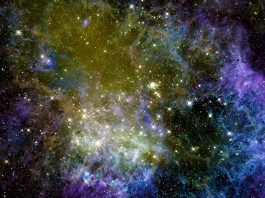A group of astrophysicists have successfully revealed what the Universe was like 13 billion years ago after measuring carbon levels in the gases surrounding ancient galaxies.
The study adds another piece to the puzzle of the history of the Universe, revealing that carbon levels suddenly increased by a factor of five over a period of only 300 million years – the blink of an eye in astronomical timescales.
Dr Rebecca Davies, ASTRO 3D Postdoctoral Research Associate at Swinburne University of Technology, Australia, and lead author of the paper, stated: “We found that the fraction of carbon in warm gas increased rapidly about 13 billion years ago, which may be linked to large-scale heating of gas associated with the phenomenon known as the Epoch of Reionisation.”
The paper, ‘Examining the Decline in the C~IV Content of the Universe over 4.3 = z = 6.3 using the E-XQR-30 Sample,’ was published in Monthly Notices of the Royal Astronomical Society.
Theories that can explain this rapid fluctuation in carbon levels
While previous studies have suggested a rise in warm carbon levels, much larger samples were needed to provide statistics to accurately measure the rate of this growth.
“That’s what we’ve done here. And so, we present two potential interpretations of this rapid evolution,” said Dr Davies.
The first theory involves an initial increase in carbon around galaxies due to a larger presence of carbon in the Universe. Dr Davies explained this theory, stating: “During the period when the first stars and galaxies are forming, a lot of heavy elements are forming because we never had carbon before we had stars. So one possible reason for this rapid rise in carbon levels is just that we are seeing the products of the first generations of stars.”
The study also found evidence of a second theory, suggesting that the amount of cool carbon decreased over the same period. This suggests that there could have been two different phases in the evolution of the Universe’s carbon levels – a rapid rise while reionisation occurs, followed by a flattening out.
What is the Epoch of Reionisation and why is it important to this study?
The Epoch of Reionisation, which took place when the Universe was just one billion years old, was when the lights came back on after the cosmic Dark Ages following the Big Bang.
Before this, the Universe was a dark, dense fog of gas. However, as the first massive stars formed, their light began to shine through space and reionise the cosmos. This light may have led to rapid heating of the surrounding gas, causing the rise in warm carbon levels observed in this study.
Studies of reionisation are vital to understanding when and how the first stars formed and began producing the elements that exist today. Despite this, recording measurements has been notoriously difficult.
The Very Large Telescope: Paving the way for revolutionary discoveries
“The research on the Universe’s carbon levels was built on an exceptional sample of data obtained during 250 hours of observations on the Very Large Telescope (VLT) at the European Southern Observatory in Chile,” explained Dr Valentina D’Odorico from the Italian Institute for Astrophysics, the Principal Investigator of the observational programme.
“This is the largest amount of observing time assigned to a single project carried out with the X-shooter spectrograph. Thanks to the eight-metre VLT, we could observe some of the most distant quasars, which act as flashlights, illuminating galaxies along the path from the early Universe to the Earth.”

As the quasar light passes through galaxies in its 13-billion-year journey across the Universe, some photons are absorbed, creating distinctive barcode-like patterns in the light, which can be analysed to determine the chemical composition and temperature of the gas in the galaxies.
These patterns, which are captured by detectors at the VLT’s X-Shooter spectrograph, give a historical picture of the development of the Universe.
“This instrument splits the galaxy light into different wavelengths, like putting light through a prism, allowing us to read the barcodes and measure the properties of each galaxy,” Dr Davies said.
The study led by Dr Davies captured more barcodes of ancient galaxies than ever before. “We increased the number of quasars from 12 to 42, for which we had high-quality data, finally allowing a detailed and accurate measurement of the evolution of the Universe’s carbon levels,” commented Dr D’Odorico.
Professor Emma Ryan-Weber, a Chief Investigator in the ARC Centre of Excellence for All Sky Astrophysics in 3 Dimensions (ASTRO 3D) and second author of the study, added: “The study provides a legacy data set which will not be significantly improved until 30m-class telescopes come online towards the end of this decade.
“High-quality data from even earlier in the Universe will require access to telescopes like the Extremely Large Telescope (ELT) now under construction in Chile.”
Collecting data is essential to understand the history of the Universe
Astronomers are using many different types of data to build a history of the Universe. “Our results are consistent with recent studies showing that the amount of neutral hydrogen in intergalactic space decreases rapidly around the same time,” said Dr Davies.
“This research also paves the way for future investigations with the Square Kilometre Array (SKA), which aims to directly detect emission from neutral hydrogen during this key phase of the Universe’s history.”
Professor Ryan-Weber explained that the research goes to the heart of ASTRO 3D’s mission to understand the evolution of elements from the Big Bang to the present day.
“It addresses this fundamental goal: how did the building blocks of life – in this case, carbon levels – proliferate across the Universe?
She concluded: “As humans, we strive to understand where things came from. It is incredible to think that the barcode of those 13-billion-year-old carbon atoms were imprinted on photons at a time when the Earth didn’t even exist. Those photons travelled across the Universe, into the VLT, and then were used to develop a picture of the evolution of the Universe.”









